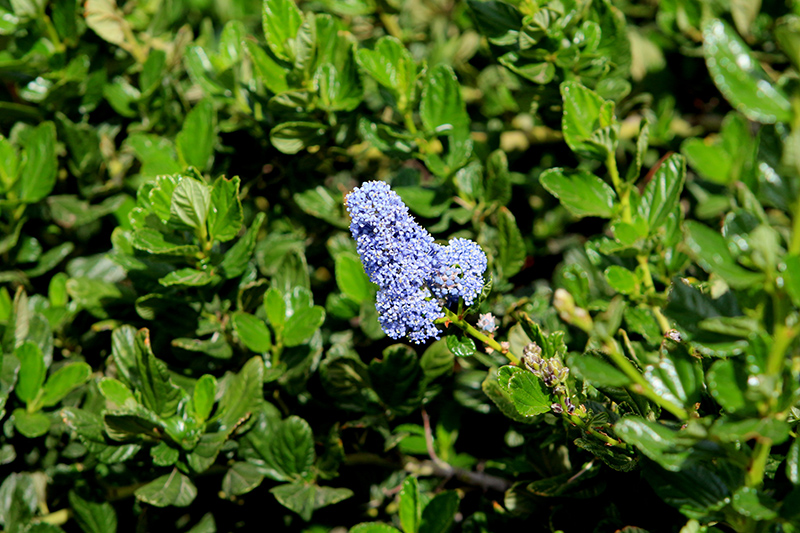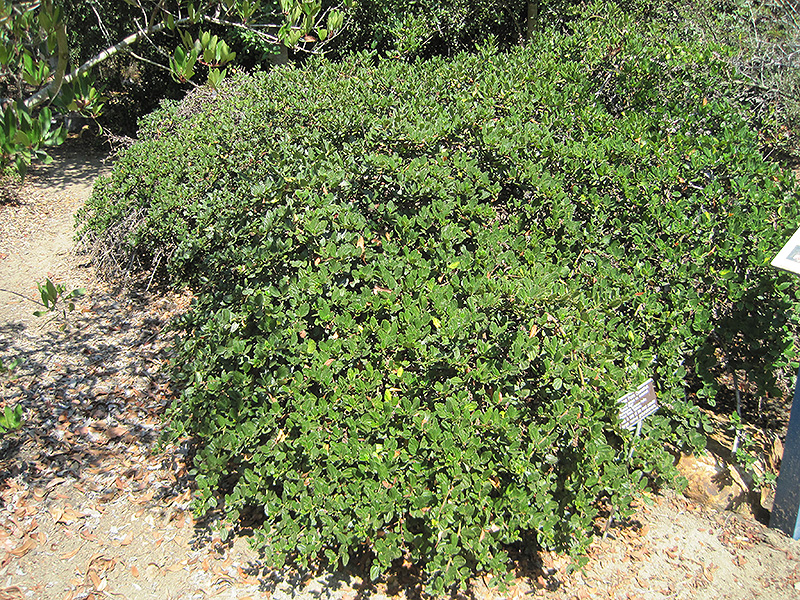Yankee Point California Lilac
Ceanothus griseus 'Yankee Point'
Height: 3 feet
Spread: 10 feet
Sunlight:
![]()
![]()
Hardiness Zone: 8a
Other Names: Ceanothus griseus var. horizontalis
Description:
A very dense, broadly spreading shrub with dark green glossy foliage that discourages weeds; beautiful indigo blue flower clusters add color in late winter to spring; a fast growing, durable groundcover
Ornamental Features
Yankee Point California Lilac is bathed in stunning cymes of indigo star-shaped flowers with blue overtones along the branches from late winter to mid spring. It has attractive dark green evergreen foliage. The glossy oval leaves are highly ornamental and remain dark green throughout the winter.
Landscape Attributes
Yankee Point California Lilac is a dense multi-stemmed evergreen shrub with a mounded form. Its average texture blends into the landscape, but can be balanced by one or two finer or coarser trees or shrubs for an effective composition.
This is a relatively low maintenance shrub, and should only be pruned after flowering to avoid removing any of the current season's flowers. It is a good choice for attracting bees and butterflies to your yard, but is not particularly attractive to deer who tend to leave it alone in favor of tastier treats. Gardeners should be aware of the following characteristic(s) that may warrant special consideration;
- Spreading
Yankee Point California Lilac is recommended for the following landscape applications;
- Mass Planting
- General Garden Use
- Groundcover
Planting & Growing
Yankee Point California Lilac will grow to be about 3 feet tall at maturity, with a spread of 10 feet. It tends to fill out right to the ground and therefore doesn't necessarily require facer plants in front. It grows at a fast rate, and under ideal conditions can be expected to live for approximately 30 years.
This shrub does best in full sun to partial shade. It prefers dry to average moisture levels with very well-drained soil, and will often die in standing water. It may require supplemental watering during periods of drought or extended heat. It is not particular as to soil type or pH, and is able to handle environmental salt. It is somewhat tolerant of urban pollution. This is a selection of a native North American species.



